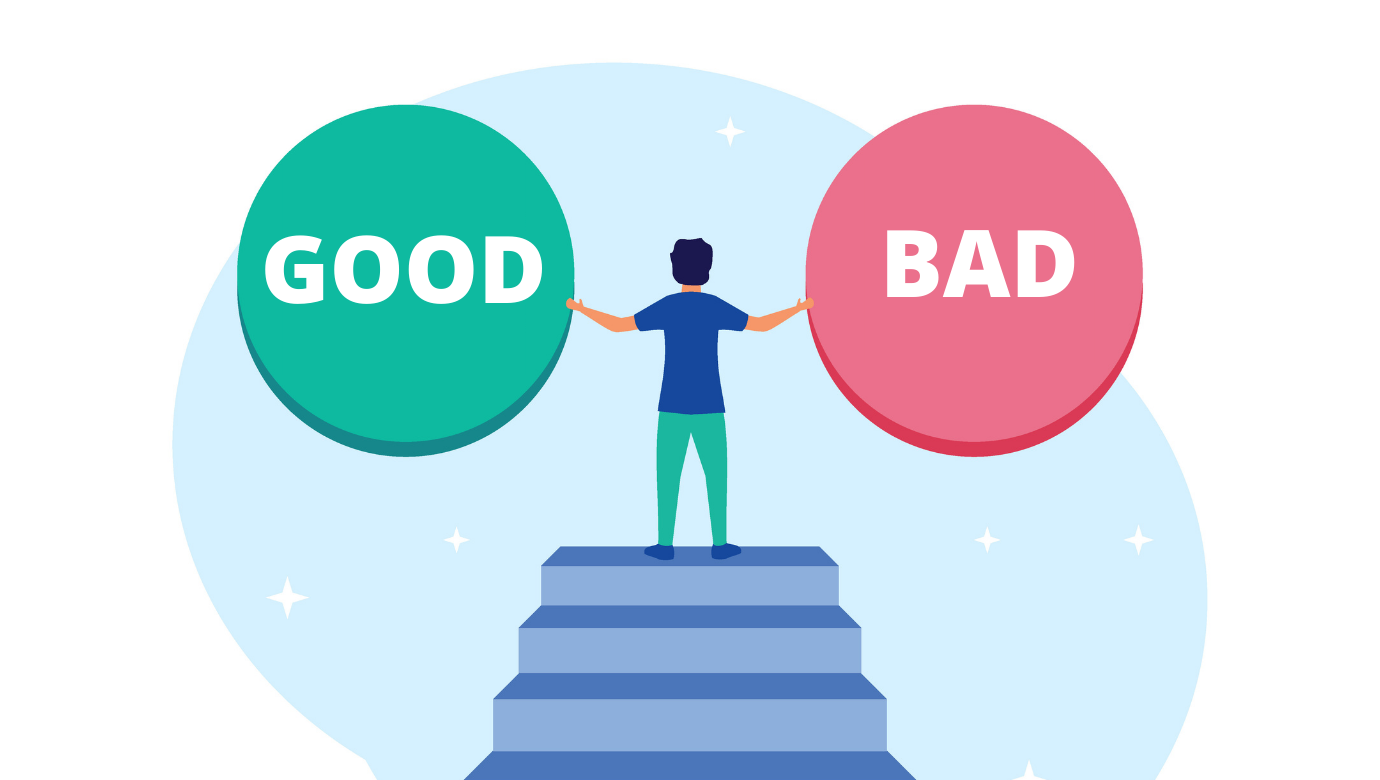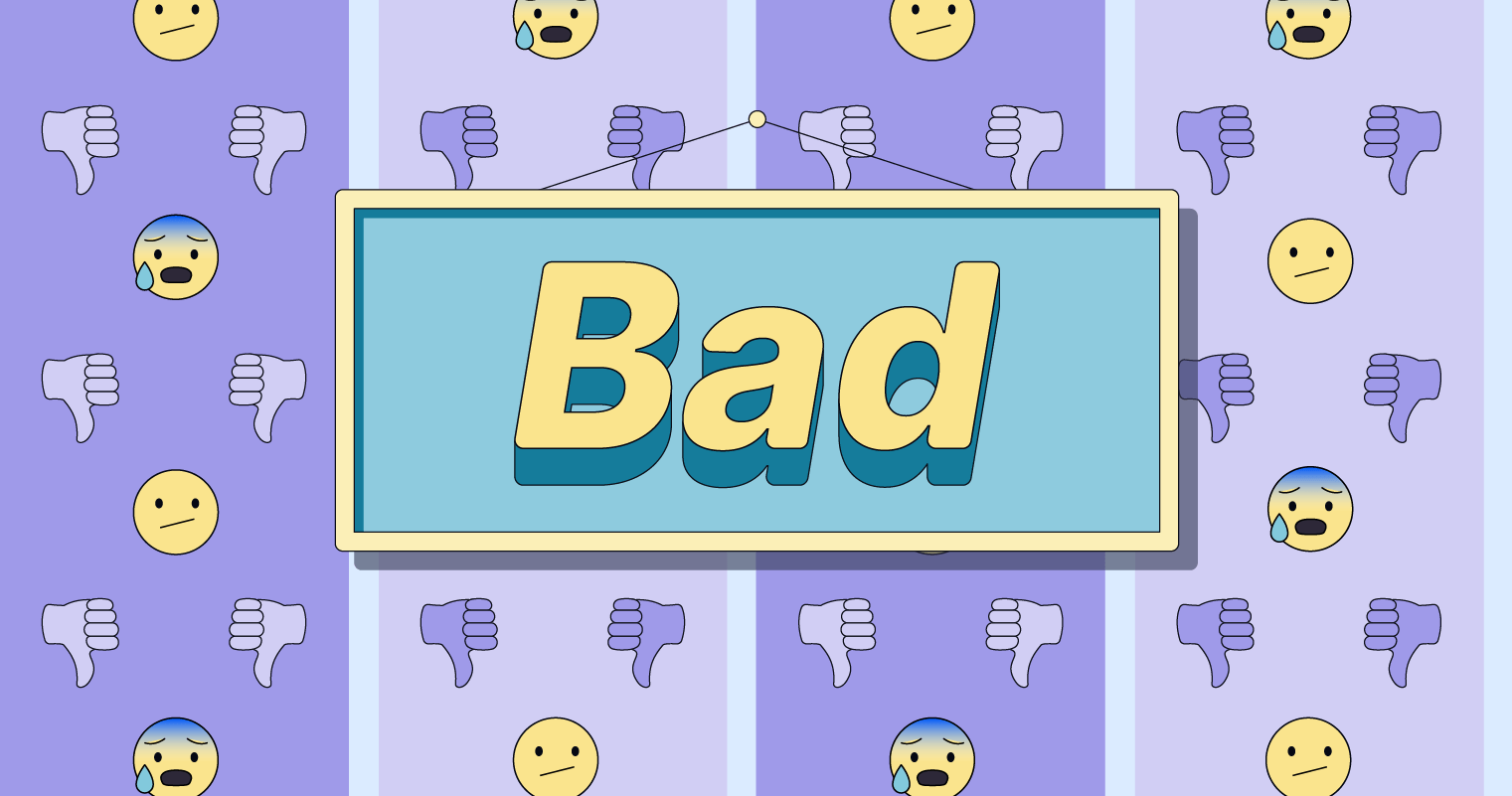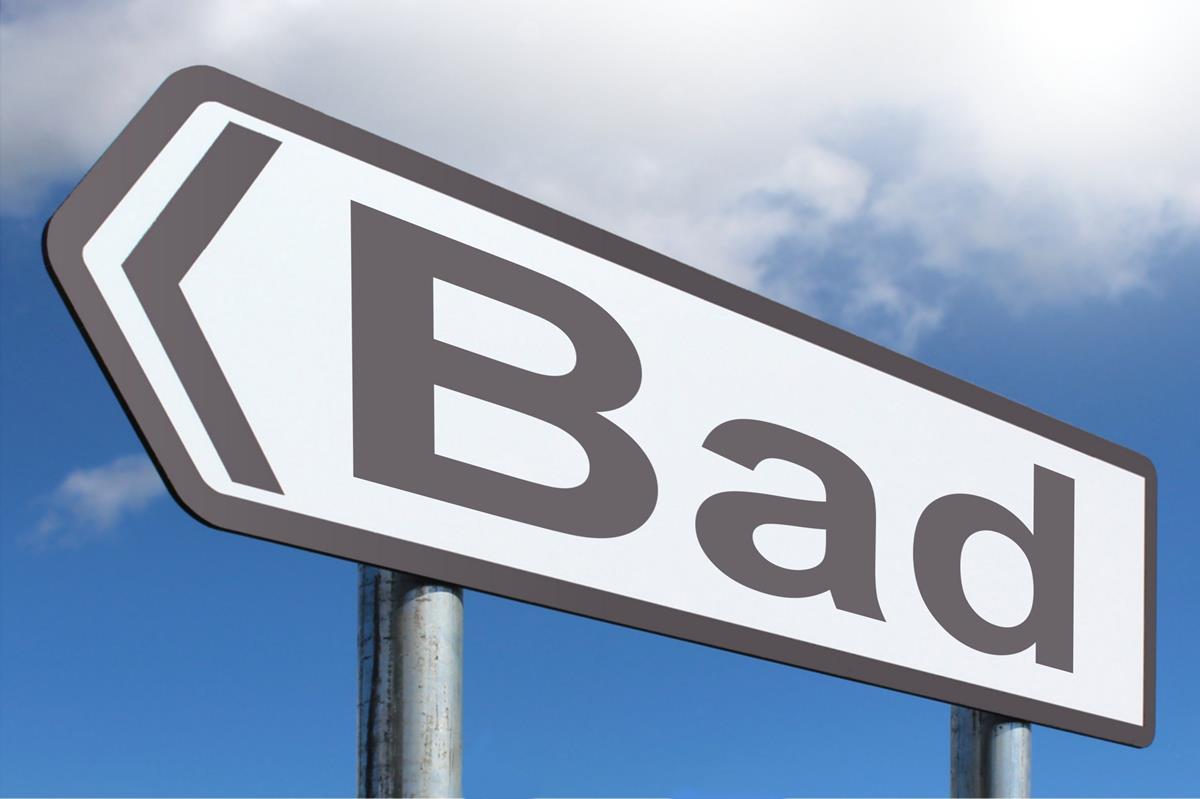Decoding The "Bad Dolly Baddies": Navigating Life's Unseen Challenges
Life, in its intricate dance of highs and lows, often presents us with formidable adversaries – the "bad dolly baddies." These aren't always tangible monsters lurking in the shadows, but rather the insidious forms of negativity, inadequacy, and adversity that can subtly or overtly derail our well-being and progress. From a nagging feeling that something is amiss to concrete situations that cause distress, understanding the multifaceted nature of "bad" is crucial for navigating our daily existence with resilience and foresight.
This article delves deep into the essence of what constitutes "bad," drawing from a rich tapestry of definitions and real-world scenarios. We'll explore how these "bad dolly baddies" manifest in various aspects of our lives – be it our health, our experiences, our ethical compass, or even the quality of the things we encounter. By dissecting the nuances of "bad," we aim to equip you with the insights needed to identify, confront, and ultimately overcome these pervasive challenges, transforming potential pitfalls into opportunities for growth.
Table of Contents
- The Many Faces of "Bad": A Comprehensive Look
- Beyond the Obvious: Subtle Forms of "Bad"
- When Experiences Turn Sour: The "Bad" Day Phenomenon
- The Ethical and Moral "Bad Dolly Baddies"
- The Intangible "Bad": Intuition and Perception
- Confronting the "Bad Dolly Baddies": Strategies for Resilience
- The Nuance of "Bad": Context is King
- Learning from the "Bad": Growth and Improvement
- From "Bad" to Better: Overcoming Challenges
The Many Faces of "Bad": A Comprehensive Look
The word "bad" is deceptively simple, yet its meaning spans a vast spectrum, touching almost every facet of human experience. At its core, "bad" often signifies something detrimental or undesirable, a force that detracts from well-being or positive outcomes. One of the most immediate associations with "bad" is related to health. When something is "causing or liable to cause sickness or ill health," it is unequivocally bad. Consider environmental pollutants, unhygienic practices, or even certain dietary choices. For instance, "too much sugar is bad for your teeth," a widely accepted truth highlighting how seemingly innocuous habits can lead to tangible harm. Similarly, someone "suffering from sickness, ill health, pain, or injury" is experiencing a profound form of "bad," a state of physical distress that demands attention and care. These health-related "bad dolly baddies" are often the most urgent to address, as they directly impact our physical capacity and quality of life.
- Emory Farmworker Project
- La Ventanita Lennox
- Ear Styling Service Near Me
- Megan Thee Stallion Jewelry
- El Ojo De San Pedro
Beyond the realm of health, "bad" extends to anything "unpleasant, harmful, or undesirable." This broad definition encompasses a myriad of situations. A business decision that leads to significant financial loss could be described as bad. A relationship characterized by constant conflict and unhappiness is a "bad marriage," as it fails to provide the expected comfort and support. The core idea here is that something is "bad" when its presence or effect diminishes our state of being, causes damage, or simply goes against what we desire or expect for a positive outcome. Recognizing these varied manifestations is the first step in identifying the "bad dolly baddies" that might be impacting our lives.
Beyond the Obvious: Subtle Forms of "Bad"
While overt harm or sickness are clear indicators of "bad," many forms of "bad" are more subtle, residing in the realm of quality, appropriateness, and ethical standards. Something can be "bad" not because it actively harms, but because it simply "fails to reach an acceptable standard." This applies to products, services, and even human performance. Think about "low quality, or not acceptable" goods that break easily or don't perform as advertised. "These scissors are so bad," one might lament, expressing frustration over a tool that simply doesn't do its job effectively. Similarly, a movie can be "very bad" if its plot is nonsensical, its acting poor, or its production value low. "I thought the actor was bad in his portrayal of the..." highlights a subjective but often widely agreed-upon assessment of performance falling short of expectations. These are the "bad dolly baddies" of mediocrity and deficiency, eroding our satisfaction and trust.
Furthermore, "bad" can describe something "unsuitable" or "not appropriate." This often relates to social conduct, decision-making, or timing. "Do you think it is a bad idea to confront him directly?" illustrates a situation where an action might not be inherently evil, but it is ill-advised or likely to lead to negative consequences. Similarly, "not appropriate, of manners etc," points to behavior that deviates from accepted social norms, causing discomfort or offense. These "bad dolly baddies" are less about direct harm and more about misalignment with expectations, whether they are personal, social, or strategic. They remind us that "bad" isn't always about malice; sometimes, it's simply about being out of sync with what's required or desired.
- Broadway Hot Chicken Middletown Nj
- Armored Combat League Arizona
- Phil X Signature Guitar
- Knoxville Survival Swim Academy
- Luxury Beach Club Islas Del Rosario
When Experiences Turn Sour: The "Bad" Day Phenomenon
Perhaps one of the most common and relatable encounters with "bad" is the "bad day" or "bad time." This refers to a period marked by unpleasantness, misfortune, or a general sense of things going wrong. "The bad weather conditions prevented the plane from landing," is a classic example of external circumstances creating a "bad" situation, disrupting plans and causing inconvenience. Similarly, "we have been going through a bad time," encapsulates a prolonged period of difficulty, stress, or hardship, where the cumulative effect of various challenges creates an overwhelming sense of negativity.
On a personal level, "I've had a bad day at work" is a universal lament, reflecting a day filled with frustrations, setbacks, or unexpected problems. It's not necessarily about a major catastrophe, but rather a series of minor annoyances or disappointments that collectively make the day feel heavy and undesirable. "It's a bad day for a picnic" perfectly illustrates how even seemingly minor factors, like weather, can turn an anticipated pleasant experience into a "bad" one. These experiential "bad dolly baddies" highlight how external conditions and a sequence of unfortunate events can significantly impact our mood, productivity, and overall enjoyment of life. They are reminders that not all "bad" is within our control, but our response to it certainly is.
The Ethical and Moral "Bad Dolly Baddies"
Beyond health, quality, and experience, "bad" takes on a profound significance when it pertains to character, ethics, and morality. "The adjective bad is a broad term that can describe things that are not good in any manner, or more pointedly, things or people that have a wicked or evil character." This definition delves into the very core of human behavior and its impact on others. When we speak of a "bad" person, we often refer to someone whose actions are driven by malice, deceit, or a disregard for the well-being of others. These are the "bad dolly baddies" that truly undermine trust, societal cohesion, and individual safety.
Ethical "badness" is about actions or principles that fall "below standard or expectations, as of ethics or decency." This can range from minor transgressions like dishonesty in small matters to major ethical breaches that cause widespread harm. For example, corruption in leadership, unfair business practices, or a lack of integrity in personal dealings all represent forms of ethical "bad." These actions not only harm those directly affected but also erode the moral fabric of communities and institutions. Understanding these moral and ethical "bad dolly baddies" is crucial for fostering a just and compassionate society, as they represent the deliberate choices that lead to suffering and injustice.
The Intangible "Bad": Intuition and Perception
Not all "bad" is tangible or easily quantifiable; sometimes, it exists in the realm of intuition, perception, and subjective feeling. "I have a bad feeling about this," is a powerful example of this intangible "bad." It's a gut instinct, a sense of foreboding that something undesirable is about to happen, even without concrete evidence. This intuitive "bad" can serve as a crucial warning system, prompting caution and careful consideration before proceeding. While not always accurate, ignoring these "bad dolly baddies" of intuition can sometimes lead to regrettable outcomes.
Similarly, "bad" can describe conditions that impede perception or functionality. "I couldn't take a picture because the lighting was bad," highlights how environmental factors, though not inherently harmful, can render an activity impossible or significantly diminish its quality. Here, "bad" refers to a state of inadequacy that prevents a desired outcome. These intangible "bad dolly baddies" remind us that our environment and our internal signals play a significant role in how we perceive and navigate the world, and that even subtle forms of "bad" can have a profound impact on our experiences and capabilities.
Confronting the "Bad Dolly Baddies": Strategies for Resilience
Given the pervasive nature of "bad," developing strategies to confront and navigate these challenges is essential for resilience and well-being. The first step is identification. Recognizing the specific form of "bad" you're facing – whether it's ill health, a low-quality product, a difficult situation, or an ethical dilemma – allows for a targeted response. For health-related "bad," seeking professional medical advice is paramount. For poor quality, consumer advocacy or seeking refunds might be appropriate. For difficult experiences, strategies like stress management, seeking support, or problem-solving can be effective.
A critical aspect of dealing with "bad" is the ability to "weighing the good against the bad." This involves a balanced assessment of a situation, recognizing both its positive and negative aspects. Sometimes, a situation might have "bad" elements, but the overall "good" outweighs them, making it worthwhile to endure or work through the difficulties. Conversely, if the "bad" consistently overshadows the "good," it might be a sign to disengage or seek a different path. This analytical approach helps us make informed decisions when faced with the "bad dolly baddies" that inevitably arise in life, enabling us to minimize their impact and maximize positive outcomes.
The Nuance of "Bad": Context is King
The meaning of "bad" is rarely absolute; it is heavily influenced by context, perspective, and cultural norms. What is considered "bad" in one situation or by one person might be acceptable or even desirable in another. This subjectivity is highlighted by the sheer number of synonyms and antonyms for the word. As thesaurus.com aptly puts it, one can "find 1318 different ways to say bad, along with antonyms, related words, and example sentences." This vast vocabulary underscores the intricate ways we perceive and categorize negativity.
For example, a "bad" decision in a high-stakes business negotiation might be disastrous, while a "bad" choice of clothing for a casual outing is merely a minor faux pas. The severity and implications of "bad" are directly proportional to the context in which it occurs. Understanding this contextual nuance is vital for effective problem-solving and communication. It prevents us from overreacting to minor "bad dolly baddies" while ensuring we give due attention to those that carry significant consequences. This nuanced understanding allows for more empathetic and effective responses to the various forms of "bad" we encounter.
Learning from the "Bad": Growth and Improvement
While encountering "bad" can be unpleasant, it often serves as a powerful catalyst for growth and improvement. Every "bad" experience, every failure to meet an acceptable standard, and every instance of undesirable outcome presents a learning opportunity. When something is "below standard or expectations," it signals an area for development. A "bad" performance, whether in a project or a personal endeavor, can highlight weaknesses that need to be addressed.
Reflecting on why something was "bad" – whether it was due to poor planning, lack of skill, external factors, or ethical missteps – provides invaluable insights. This introspection allows us to refine our approaches, develop new skills, and make better decisions in the future. The very act of "weighing the good against the bad" helps us to learn from our mistakes and build resilience. In essence, the "bad dolly baddies" are not just obstacles; they are teachers, guiding us toward greater competence, wisdom, and strength. Embracing this perspective transforms adversity into a stepping stone for personal and collective advancement.
From "Bad" to Better: Overcoming Challenges
The journey from "bad" to better is a testament to human resilience and adaptability. Overcoming the "bad dolly baddies" in our lives requires a proactive approach, combining critical thinking with decisive action. If things are "looking pretty bad for us at this point," it's not a cue for despair but a call to action. This might involve re-evaluating strategies, seeking expert advice, or simply changing course. For instance, addressing a "bad marriage" might involve counseling, open communication, or, in some cases, the difficult decision to separate, all aimed at moving towards a better state of being.
The key is to not let "bad" situations fester. Whether it's a health issue, a professional setback, or a personal challenge, taking concrete steps to mitigate the "bad" and move towards "acceptable, adequate, satisfactory, okay, decent, fine, great, standard" outcomes is crucial. This might involve learning new skills to overcome a "bad" performance, implementing better practices to avoid "bad" quality, or making difficult choices to escape "bad" circumstances. By actively engaging with our challenges, we transform the passive experience of "bad" into an active pursuit of betterment, ultimately enhancing our lives and those around us.
Conclusion
The "bad dolly baddies" are an inescapable part of life's rich tapestry, manifesting in countless forms from physical ailments and ethical failings to poor quality and unfortunate circumstances. Understanding the multifaceted nature of "bad"—whether it's "unacceptable, wrong, poor," or simply "unpleasant, harmful, or undesirable"—is the first critical step in navigating these challenges. We've explored how "bad" can impact our health, our experiences, our ethical compass, and even our intuition, highlighting its pervasive influence.
However, recognizing these "bad dolly baddies" is not about succumbing to negativity, but about empowering ourselves to act. By learning to identify, analyze, and strategically respond to the various forms of "bad," we can transform potential pitfalls into opportunities for growth and improvement. Remember, every instance of "bad" carries a lesson, guiding us towards better decisions, stronger resilience, and ultimately, a more fulfilling life. What "bad dolly baddies" are you ready to confront and transform today? Share your thoughts and strategies in the comments below, or explore more articles on our site to further equip yourself for life's inevitable challenges.
- Ridge Lovett Age
- Heaven Angels Learning Center
- Bend Reggae Festival
- The Hillside Estate Photos
- Cartel Money Disposable

When bad means good - Lesson Plan - ESL Brains

Other Ways to Say “Bad”, With Examples | Grammarly

Bad - Highway Sign image